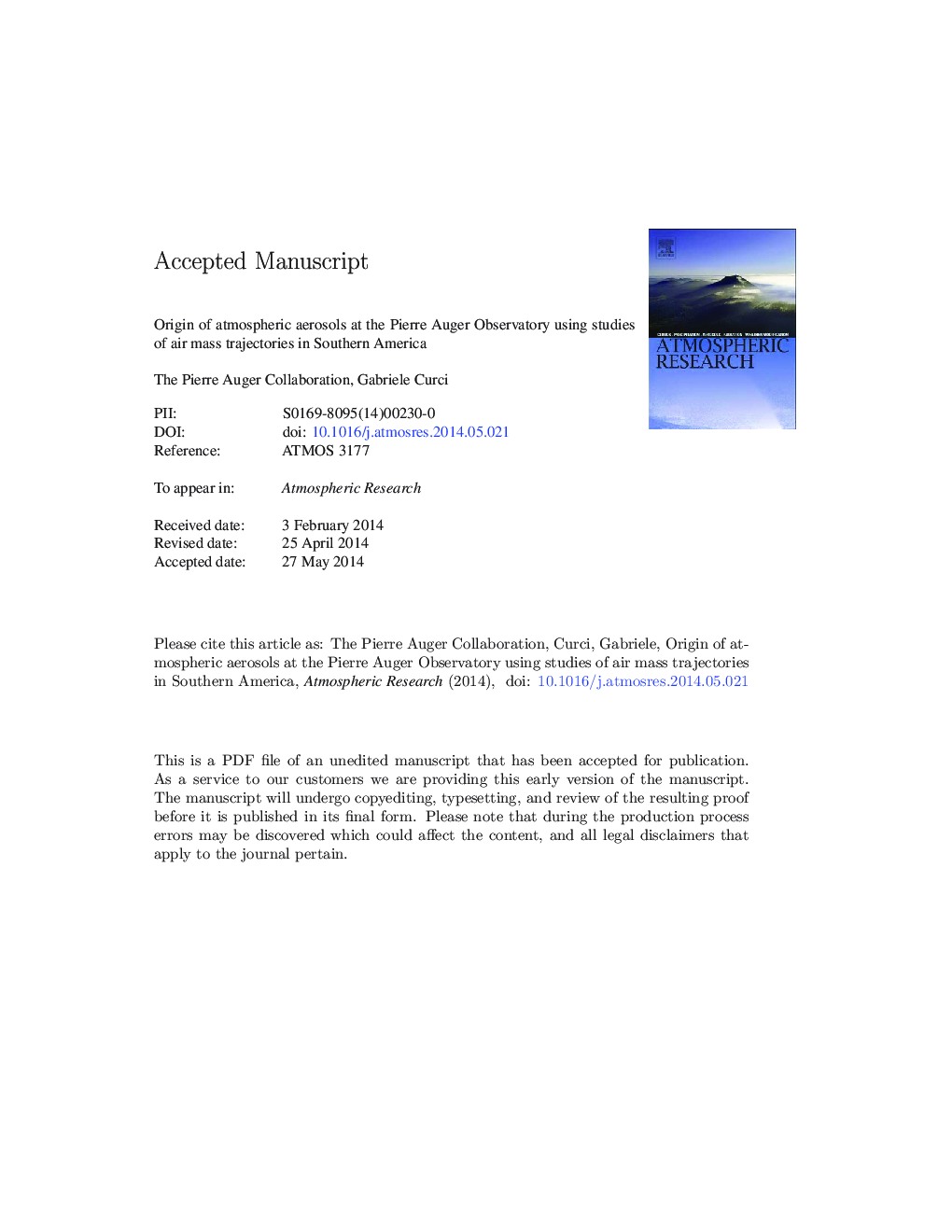| Article ID | Journal | Published Year | Pages | File Type |
|---|---|---|---|---|
| 6343520 | Atmospheric Research | 2014 | 18 Pages |
Abstract
The Pierre Auger Observatory is making significant contributions towards understanding the nature and origin of ultra-high energy cosmic rays. One of its main challenges is the monitoring of the atmosphere, both in terms of its state variables and its optical properties. The aim of this work is to analyse aerosol optical depth Ïa(z) values measured from 2004 to 2012 at the observatory, which is located in a remote and relatively unstudied area of Pampa Amarilla, Argentina. The aerosol optical depth is in average quite low - annual mean Ïa(3.5 km) â¼Â 0.04 - and shows a seasonal trend with a winter minimum - Ïa(3.5 km) â¼Â 0.03 -, and a summer maximum - Ïa(3.5 km) â¼Â 0.06 -, and an unexpected increase from August to September - Ïa(3.5 km) â¼Â 0.055. We computed backward trajectories for the years 2005 to 2012 to interpret the air mass origin. Winter nights with low aerosol concentrations show air masses originating from the Pacific Ocean. Average concentrations are affected by continental sources (wind-blown dust and urban pollution), whilst the peak observed in September and October could be linked to biomass burning in the northern part of Argentina or air pollution coming from surrounding urban areas.
Related Topics
Physical Sciences and Engineering
Earth and Planetary Sciences
Atmospheric Science
Authors
A. Aab, P. Abreu, M. Aglietta, M. Ahlers, E.J. Ahn, I.F.M. Albuquerque, I. Allekotte, J. Allen, P. Allison, A. Almela, J. Alvarez Castillo, J. Alvarez-Muñiz, R. Alves Batista, M. Ambrosio, A. Aminaei, L. Anchordoqui, S. Andringa, T. AntiÄiÄ, G. Curci,
